June 3, 2024 | Getting Prepared | No Comments

If an earthquake, fire, other natural disaster or EMP/nuclear strike occur while you are away from home, having a “Get-Home” bag in your car could be a life-savor. This is a great option for those who drive to and from work in their own vehicle. This bag is not a 72-hour kit or a car emergency kit, but a bag with items designed to help you get home as fast and safe as possible when you can no longer drive home.
NOTE – If you’d like a Get-Home Bag but lack the time to gather the items and make one, you can now purchase a Made-to-Order Get-Home Bag from here, at my new website: preparednesskits.net
Type of Bag
First, you want a bag that you can carry for miles. A sturdy backpack is usually the best option, but it you have a bag that you can swing over your shoulder and carry comfortably, that would work as well.
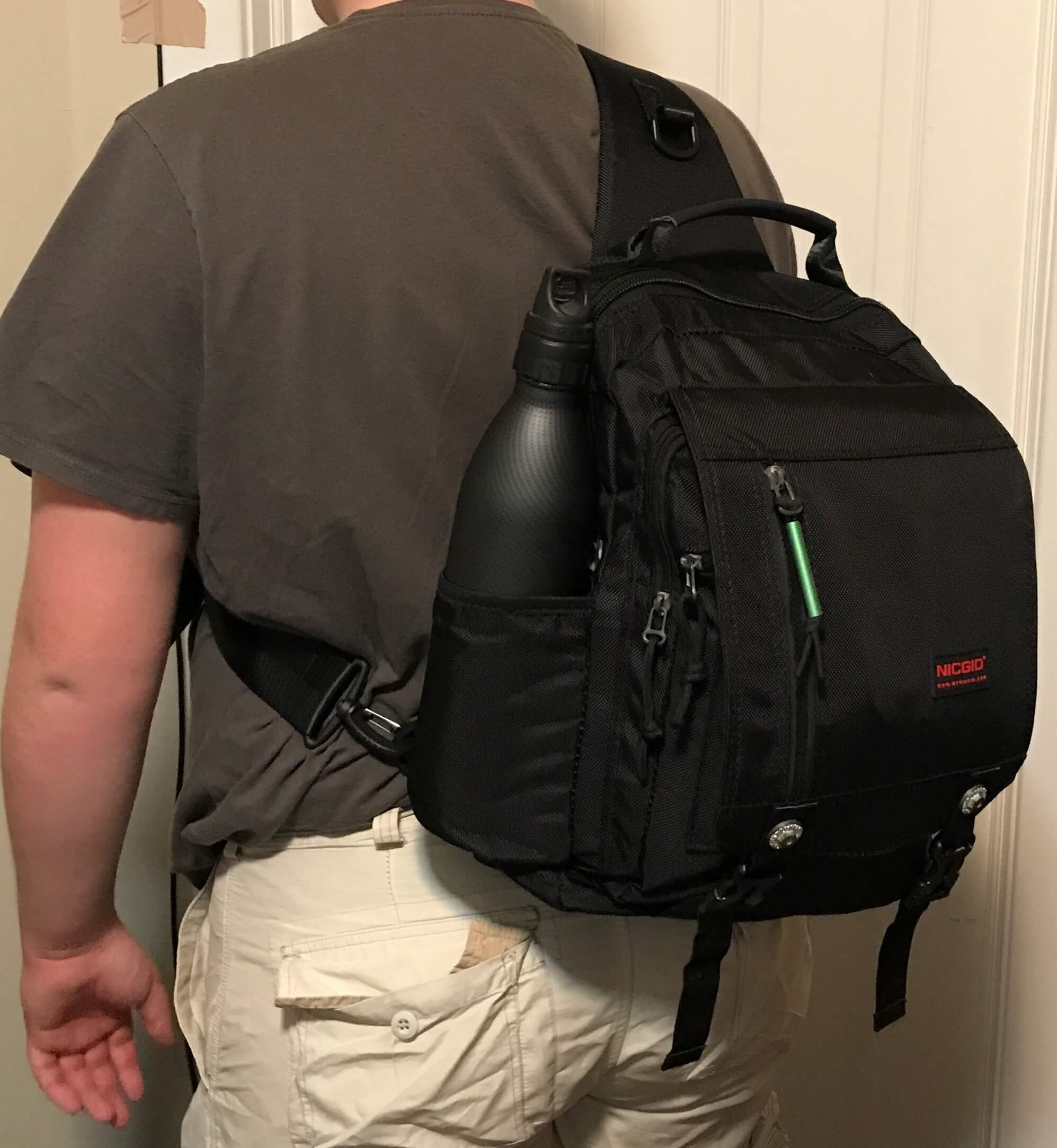
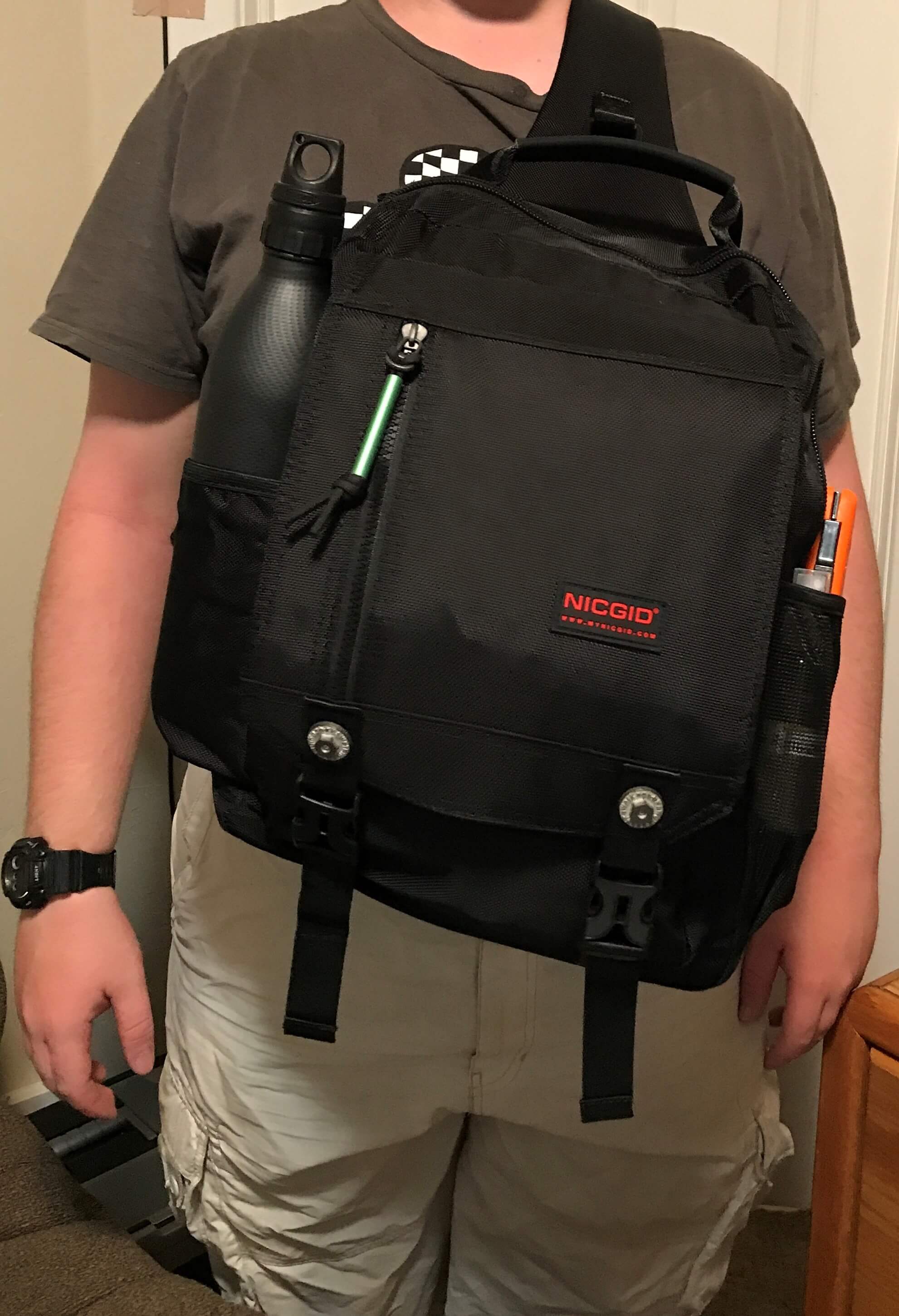

A sling pack is a good option for being able to carry on your back or your front. If you have a large enough jacket or hoodie, you could possibly cover your sling pack so it does not draw attention to others who may be looking for someone to loot in a disaster situation.
Basics to Have
Next, you want to gather the basics to pack. Here is a list of items that are essential to have in your “Get-Home” bag:
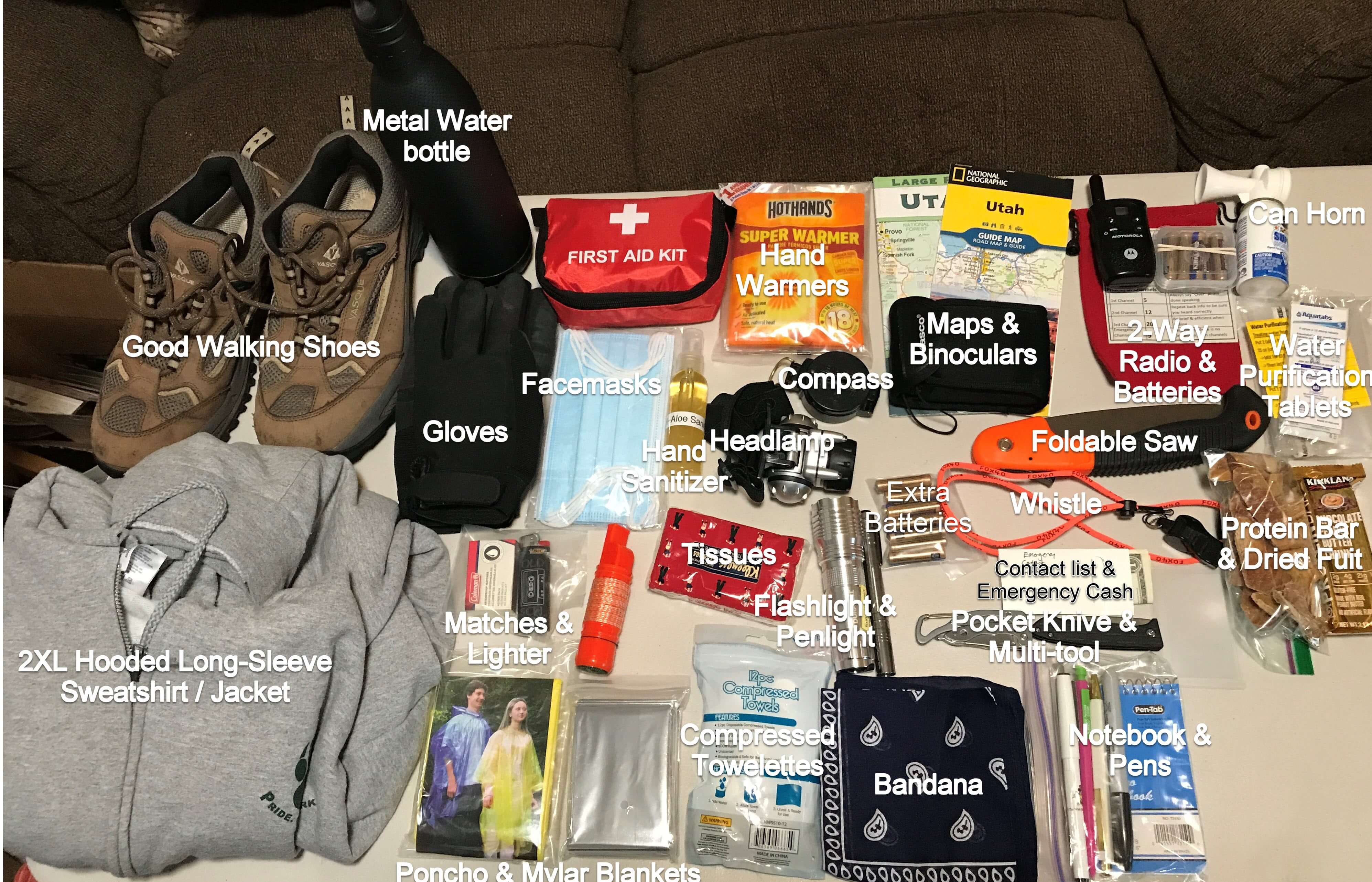
- A sturdy pair of walking shoes. You may be walking for many miles and you want something to hold up to the various terrain.
- Warm hooded jacket or hoodie. This will give your upper body cover when walking at night and protection for your head from debris of fallout.
- Gloves for removing debris and hand-coverings from fallout.
- Water Bottle. Whenever you get in your car to leave, you should always bring a fresh bottle of water. That way you will always have fresh water in your vehicle. You can also keep a metal or plastic water bottle in your Get-Home bag, so you have that to fill and refill.
- Flashlight or Headlamp with extra batteries to see while walking in the dark.
- Emergency Mylar blanket for warmth, ground over, and a shield from fallout.
- Emergency poncho for rain and sun protection.
- Foldable knife or multi-tool to help remove debris and for protection. You will want to take this from your pack and keep it in your pocket for quick access when needed.
- First Aid Kit to help with any injuries or bleeding.
- Face Mask or Bandana to cover face and protect from debris.
- Two-Way Radio with extra batteries and your family instruction card that lists the first and second channels of choice to try and contact each other on. One of these radios is kept at home with a copy of the same instruction card and can be turned on in an emergency to listen for you as you are coming home on foot.
- Maps of the area to help you find short cuts and get home quickly.
- Compass to help you find the direction in which to travel.
Other Items to Include:
- Portable or foldable saw to cut away debris in your way.
- Contact List of written down emergency contacts name and number and also the names and numbers of family members for contacting. This could be vital if your cell phone battery dies or is no longer working and you can’t retrieve your contact list digitally.
- Emergency cash in small bills to have if needed.
- Toilet paper or condensed towelettes to use when having to go to the bathroom while traveling outdoors.
- Small notebook and pens / pencils for writing notes or keeping track of things.
- Water filter straw or purification tablets to purify water along the way if your water bottle runs out.
- Small water bag for gathering water to purify if needed. You may just use and reuse your current water bottle for this as well.
- Matches or Lighter if you need to start a fire.
- Hand Sanitizer.
- Air Horn in a can for scaring off wildlife or signaling for help.
- Pain killers or medication that is not included in your first aid kit.
- Sunglasses or goggles for eye protection.
- Child ID cards to use if needed to identify your children if they are missing, or to have them keep in their pockets if they are with you while traveling home.
- Recent family photos for ID purposes.
- Hat for sun protection
- Snacks like protein bar, nuts, or dried fruit to keep your energy up.
- Umbrella stroller if needed to carry supplies or for a child.

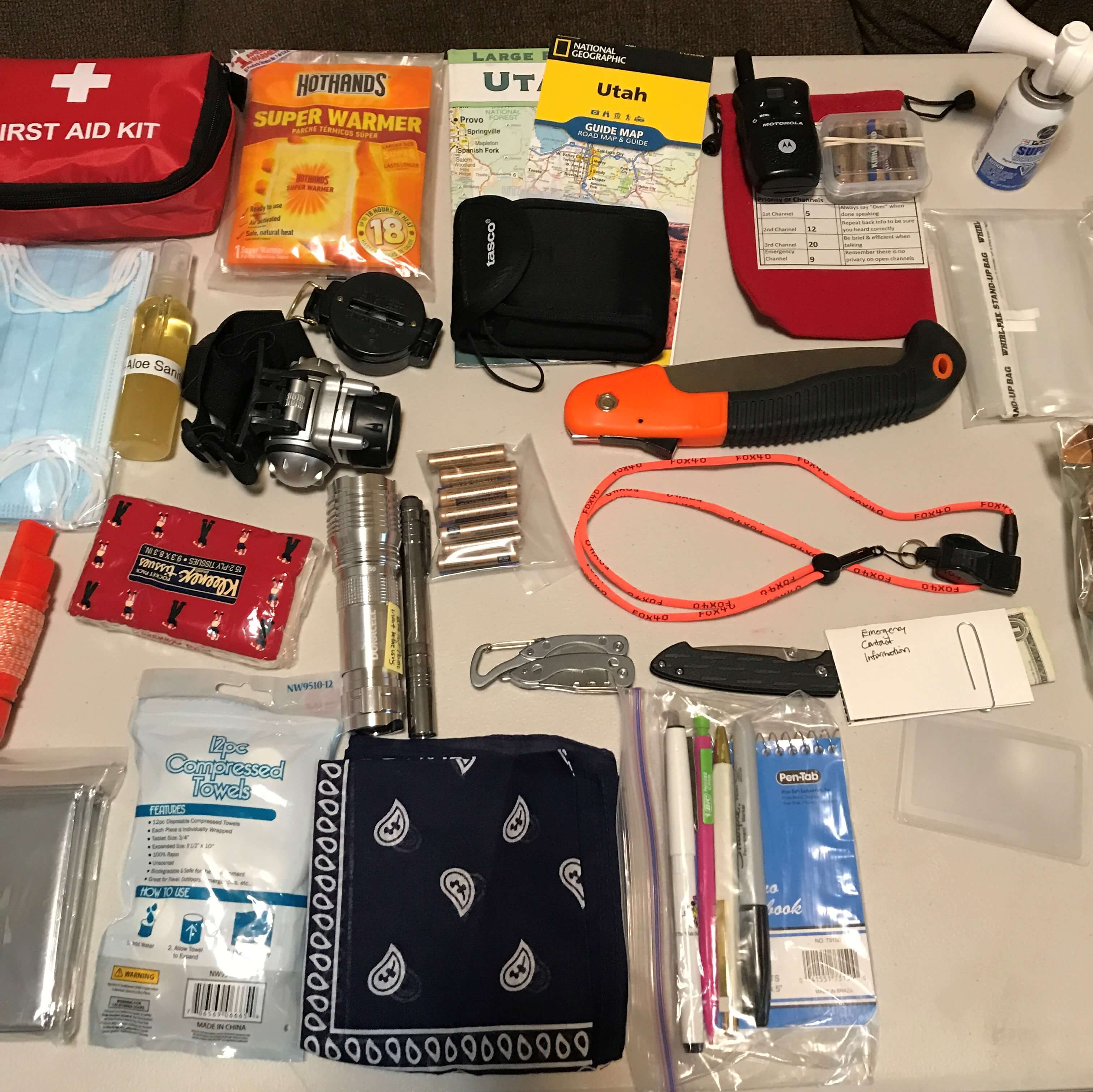
Packing Weight
When making your “Get-Home” bag, remember to consider how heavy it is when fully packed. If your place of work is 30 miles away, you have to consider what can logically be carried on foot for that many miles. Include the absolute necessities and all other items you might need.
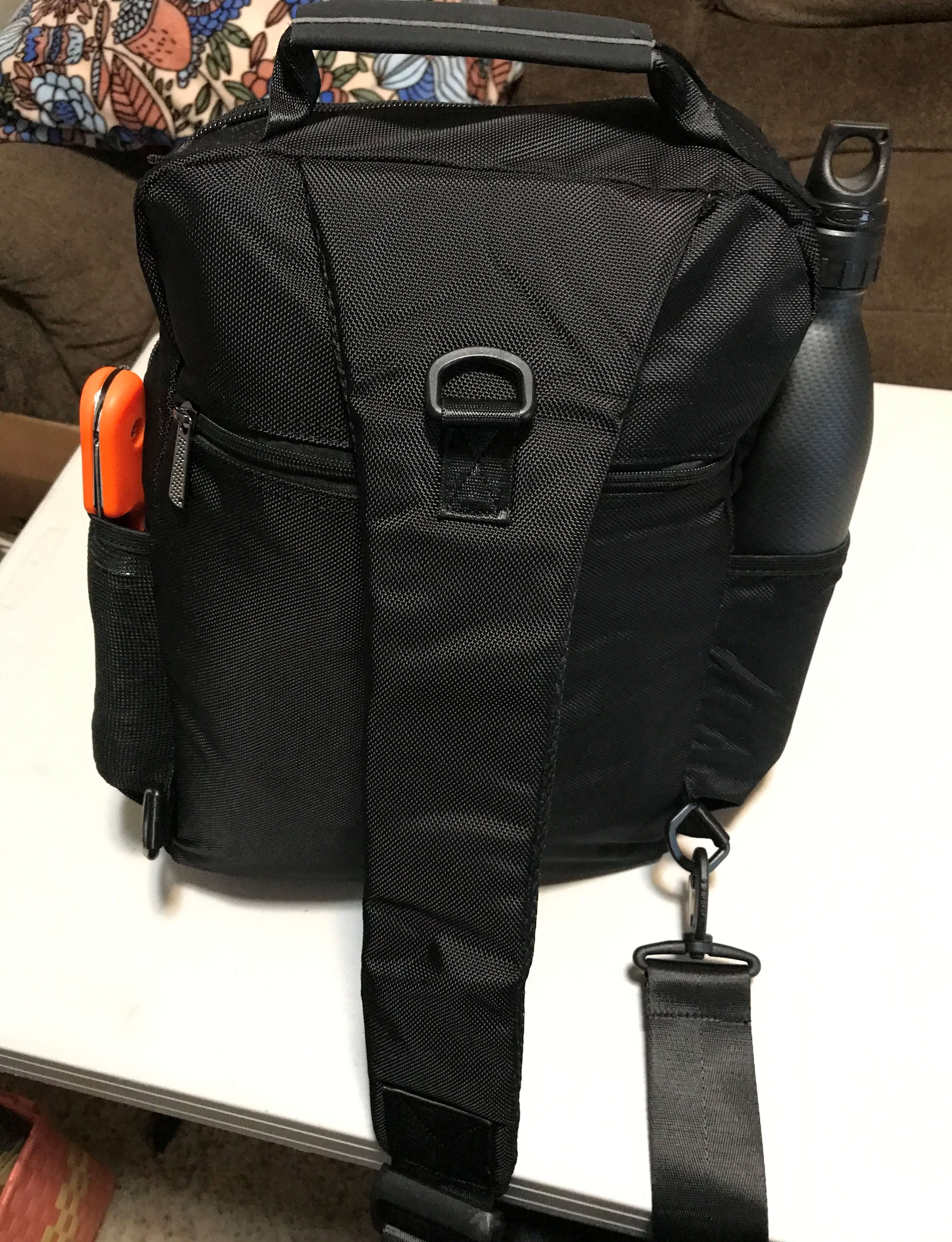
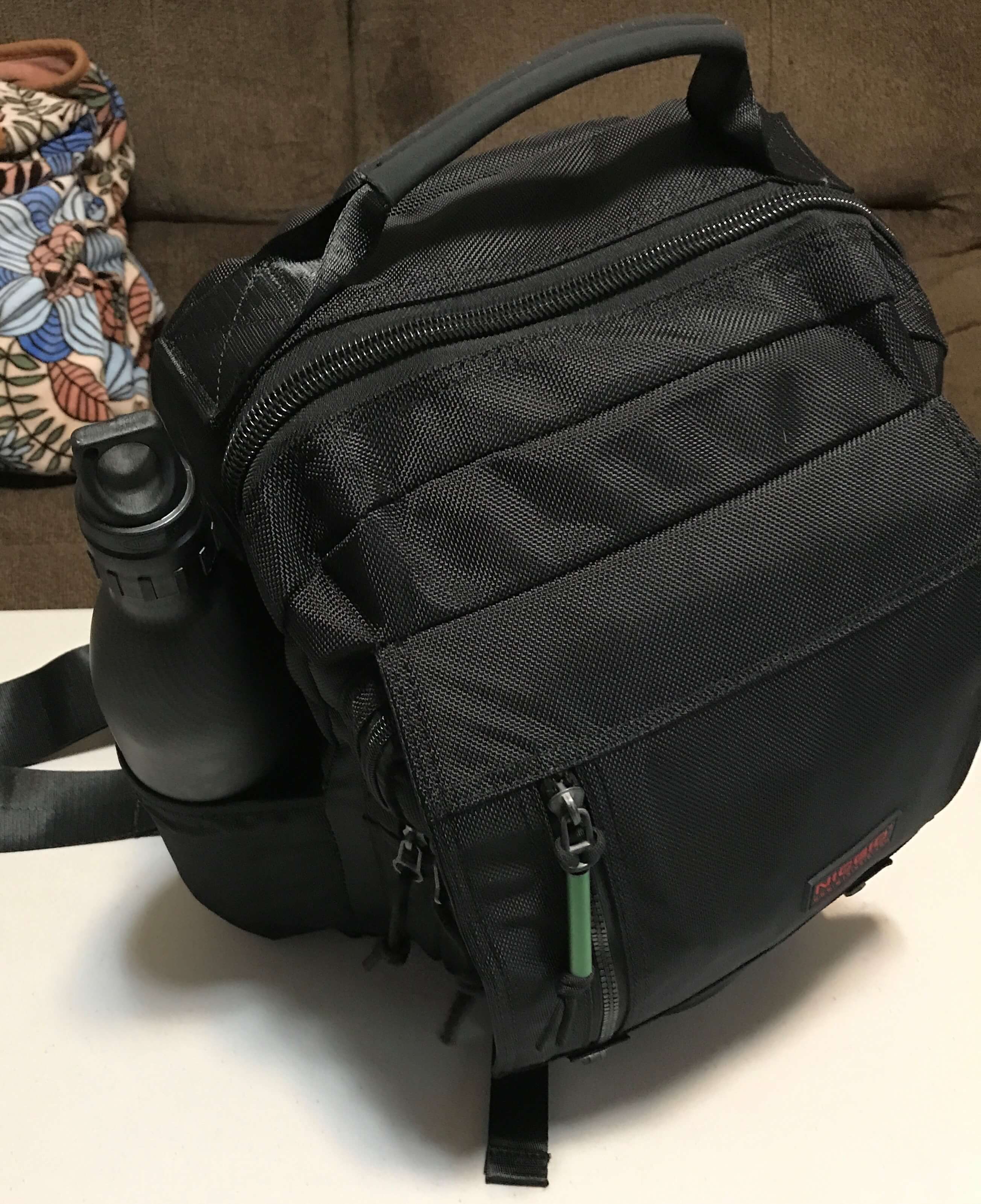
Then, you can always take items out that you will not need before leaving your vehicle and include the items you will need the most. It is better to have more of what you need and leave it behind than to not have everything you need to get home safely.
Nuclear Fallout
Also note where the nearest military base is from your work and home and consider how long fallout from a nuclear explosion coming from that military base would take to reach you. You will want to have coverings to protect your head, arms, hands, legs and feet until you reach home.
Upon reaching home, you should take off ALL coverings from your body that fallout could have touched, even to your bare skin if needed, and then go inside and shower. All those coverings must be burned as washing them will not eradicate the radiation poisoning on them.
Customize It
This list is just to help you get started. You may have other items you want to include like a firearm, ammunition, GPS, ham radio, USB flash drive with important documents, MRE’s, and so forth.

Another option is to utilize a tactical vest (like the one pictured below) with compartments providing easy access for the items that you carry with you, including a handgun. You could still put your jacket over this vest to not draw attention if desired.
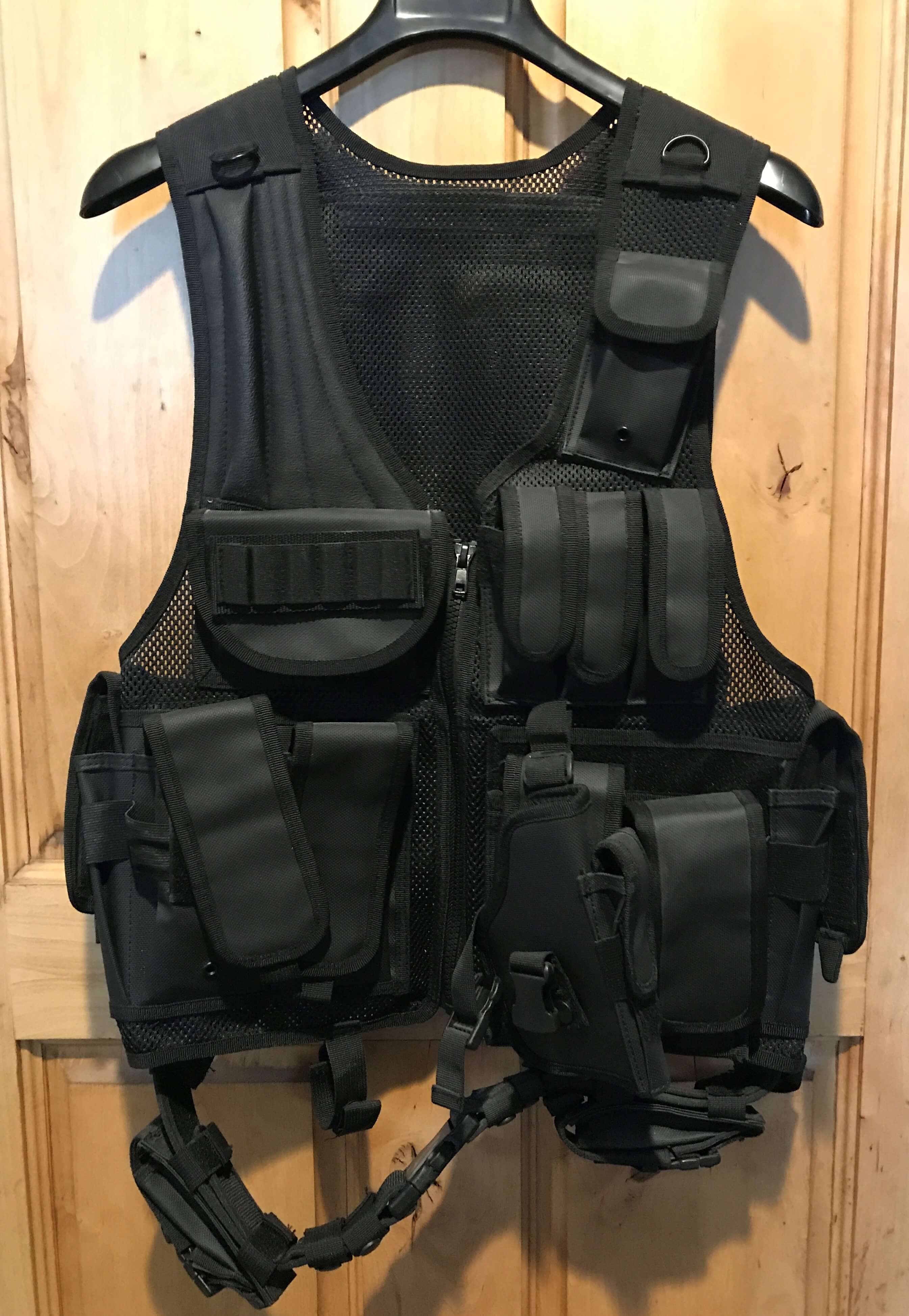
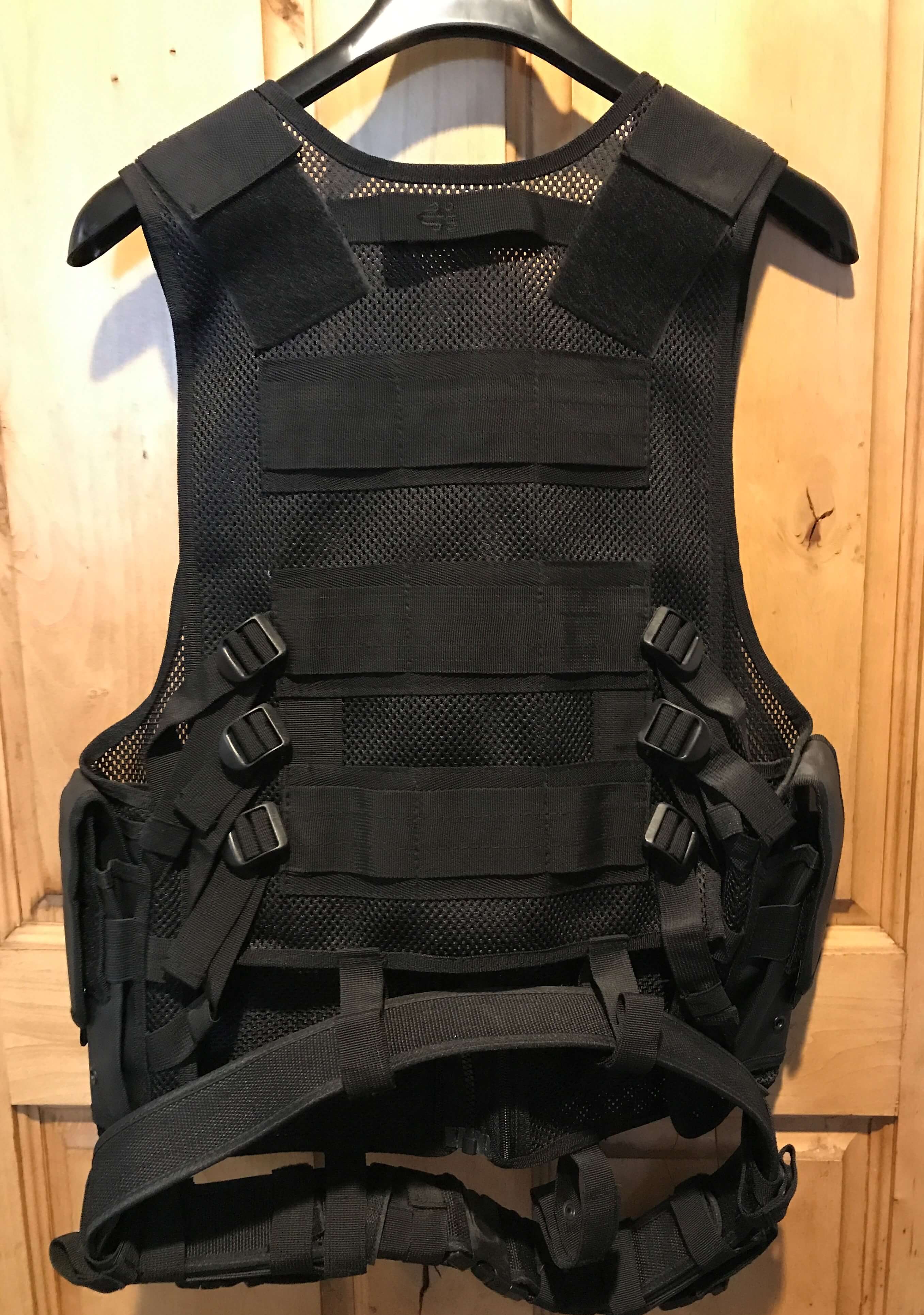
Deprecated: ucwords(): Passing null to parameter #1 ($string) of type string is deprecated in /var/www/www-root/data/www/diypreparedness.net/wp-content/themes/daron/single.php on line 82



